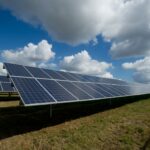Support our educational content for free when you purchase through links on our site. Learn more
[2023] What is the Meaning of Green Home?
Welcome to Gone Greenish™, where we believe in living a healthy and sustainable life. In this article, we'll explore the meaning of green homes and why they are important for a healthier planet. So, let's dive in and discover the world of green homes together!
Table of Contents
- Quick Answer
- Quick Tips and Facts
- What Does it Mean for a Home to be Green?
- What are Green Homes Called?
- What are the Benefits of Green Homes?
- What is an Eco-Friendly Green House?
- FAQ
- Conclusion
- Useful Links
- Reference Links
Quick Answer
A green home is a residential building that is designed and constructed to be environmentally friendly and energy-efficient. It incorporates sustainable materials, efficient energy systems, and eco-friendly practices to minimize its impact on the environment. Green homes prioritize energy efficiency, water conservation, and indoor air quality, making them healthier and more sustainable living spaces.
Shop green home products on Amazon and Walmart.
Quick Tips and Facts
- Green homes are also known as sustainable homes, eco-homes, or environmentally friendly homes.
- They are designed to reduce energy consumption, water usage, and waste production.
- Green homes often utilize renewable energy sources like solar power and employ energy-efficient appliances and systems.
- Building a green home can help reduce carbon emissions and combat climate change.
- Green homes promote a healthier indoor environment by using non-toxic materials and improving indoor air quality.
What Does it Mean for a Home to be Green?
A green home goes beyond the traditional concept of a house. It is built with sustainable materials and designed to have a minimal impact on the environment throughout its lifecycle. Here are some key elements that define a green home:
Energy Efficiency
Green homes prioritize energy efficiency by using insulation, energy-efficient windows, and high-efficiency heating and cooling systems. They may also incorporate renewable energy sources like solar panels to generate electricity.
Water Conservation
Water conservation is another crucial aspect of green homes. They often feature low-flow fixtures, rainwater harvesting systems, and efficient irrigation methods to reduce water consumption.
Sustainable Materials
Green homes are built using sustainable materials that have a lower environmental impact. These materials can include recycled or reclaimed wood, bamboo, and other renewable resources. They also minimize the use of harmful chemicals and toxins.
Indoor Air Quality
Green homes focus on providing a healthy indoor environment. They use non-toxic paints, sealants, and adhesives to improve indoor air quality. Additionally, proper ventilation systems are installed to ensure fresh air circulation.
Waste Reduction
Green homes aim to minimize waste production during construction and operation. They prioritize recycling and use materials that can be easily recycled or repurposed. They also encourage homeowners to adopt eco-friendly waste management practices.
Shop energy-efficient appliances for your green home on Amazon and Walmart.
What are Green Homes Called?
Green homes are known by various names that reflect their sustainable and eco-friendly nature. Some common terms used to describe green homes include:
- Sustainable homes
- Eco-homes
- Environmentally friendly homes
- Energy-efficient homes
- Low-impact homes
- Passive houses
- Zero-energy homes
These terms all refer to homes that prioritize sustainability, energy efficiency, and environmental responsibility.
What are the Benefits of Green Homes?
Green homes offer numerous benefits for both homeowners and the environment. Let's take a look at some of the key advantages:
Energy Savings
One of the biggest benefits of green homes is reduced energy consumption. With energy-efficient appliances, proper insulation, and renewable energy sources, homeowners can significantly lower their utility bills and save money in the long run.
Environmental Impact
Green homes have a smaller carbon footprint compared to conventional homes. By using renewable energy sources and sustainable materials, they help reduce greenhouse gas emissions and combat climate change. They also conserve water and minimize waste production.
Healthier Indoor Environment
Green homes prioritize indoor air quality by using non-toxic materials and proper ventilation systems. This creates a healthier living environment, reducing the risk of respiratory issues and allergies.
Increased Property Value
As the demand for sustainable homes grows, green homes tend to have higher property values. Homebuyers are increasingly looking for energy-efficient and environmentally friendly features, making green homes a wise investment.
Government Incentives
In many regions, there are government incentives and tax credits available for homeowners who choose to build or upgrade to green homes. These incentives can help offset the initial costs and make green home options more accessible.
Shop sustainable home products on Amazon and Walmart.
What is an Eco-Friendly Green House?
An eco-friendly green house is a type of green home that specifically focuses on sustainability and environmental friendliness. It incorporates various features and practices to minimize its impact on the environment. Here are some key aspects of an eco-friendly green house:
Passive Design
Eco-friendly green houses often utilize passive design strategies to maximize energy efficiency. This can include strategic window placement for natural light and ventilation, as well as proper insulation to reduce the need for artificial heating and cooling.
Renewable Energy Sources
To further reduce reliance on fossil fuels, eco-friendly green houses often incorporate renewable energy sources like solar panels or wind turbines. These systems generate clean energy, reducing the overall carbon footprint of the house.
Water Conservation Systems
Eco-friendly green houses implement water conservation systems such as rainwater harvesting and graywater recycling. These systems collect rainwater for irrigation and reuse graywater from sinks and showers for non-potable purposes, reducing the demand for fresh water.
Sustainable Landscaping
The landscaping around an eco-friendly green house is designed to be environmentally friendly. This can include native plants that require less water and maintenance, as well as permeable surfaces to minimize stormwater runoff.
Smart Home Technology
Many eco-friendly green houses incorporate smart home technology to optimize energy usage. This can include automated systems that adjust lighting, heating, and cooling based on occupancy and energy demand.
Shop eco-friendly home products on Amazon and Walmart.
FAQ
What does it mean for a home to be green?
A green home is a residential building that is designed and constructed to be environmentally friendly and energy-efficient. It incorporates sustainable materials, efficient energy systems, and eco-friendly practices to minimize its impact on the environment.
What are green homes called?
Green homes are also known as sustainable homes, eco-homes, or environmentally friendly homes.
What are the benefits of green homes?
Green homes offer numerous benefits, including energy savings, reduced environmental impact, healthier indoor environments, increased property value, and potential government incentives.
What is an eco-friendly green house?
An eco-friendly green house is a type of green home that specifically focuses on sustainability and environmental friendliness. It incorporates features like passive design, renewable energy sources, water conservation systems, sustainable landscaping, and smart home technology.
Are green homes more expensive?
While the initial cost of building a green home may be slightly higher compared to a conventional home, the long-term savings in energy bills and potential government incentives can offset the initial investment. Additionally, the increased property value of green homes can make them a wise financial choice.
Are there certifications for green homes?
Yes, there are several certifications available for green homes, such as LEED (Leadership in Energy and Environmental Design) and ENERGY STAR. These certifications ensure that a home meets specific criteria for energy efficiency, sustainability, and environmental responsibility.
Shop green home certifications and books on Amazon and Walmart.
Conclusion
Green homes play a vital role in creating a healthier and more sustainable future. By incorporating energy-efficient systems, sustainable materials, and eco-friendly practices, green homes reduce our impact on the environment while providing comfortable and healthy living spaces. Whether you're considering building a green home or making eco-friendly upgrades to your current home, every step towards sustainability counts.
Remember, at Gone Greenish™, we believe that a healthy you leads to a healthy planet!
Useful Links
- Shop green home products on Amazon and Walmart
- Shop energy-efficient appliances on Amazon and Walmart
- Shop sustainable home products on Amazon and Walmart
- Shop eco-friendly home products on Amazon and Walmart
- Shop green home certifications and books on Amazon and Walmart
- Visit the Gone Greenish™ site here







